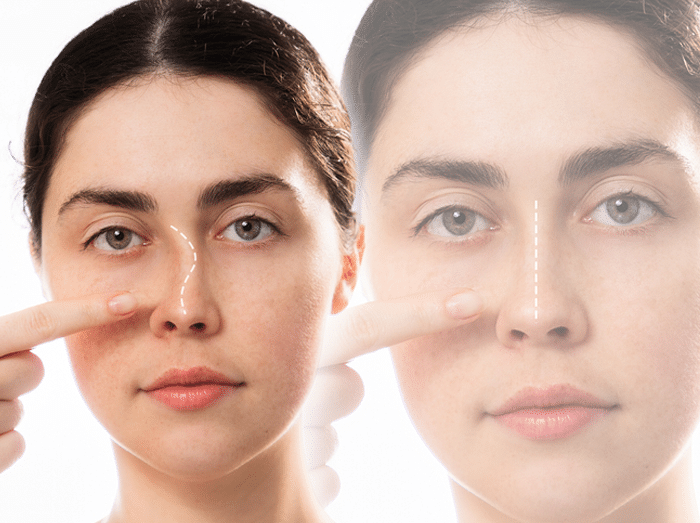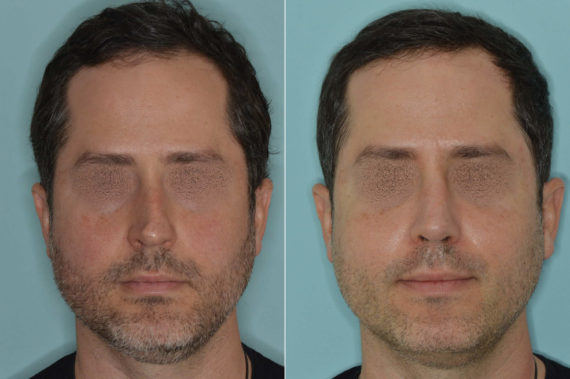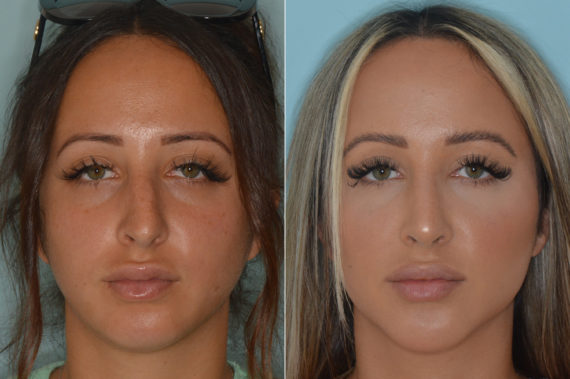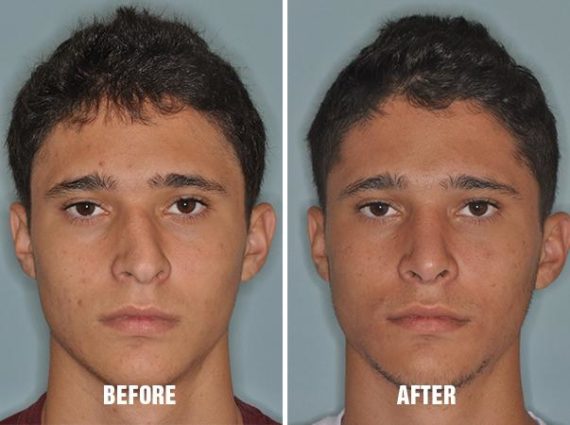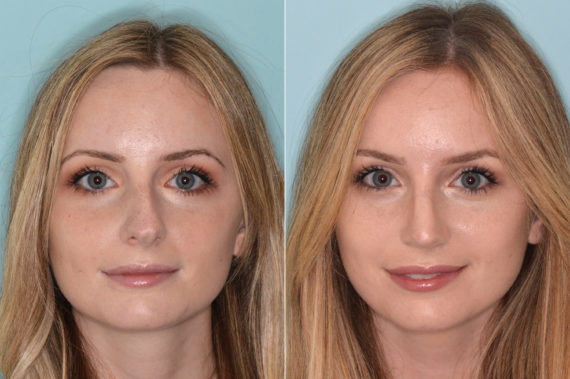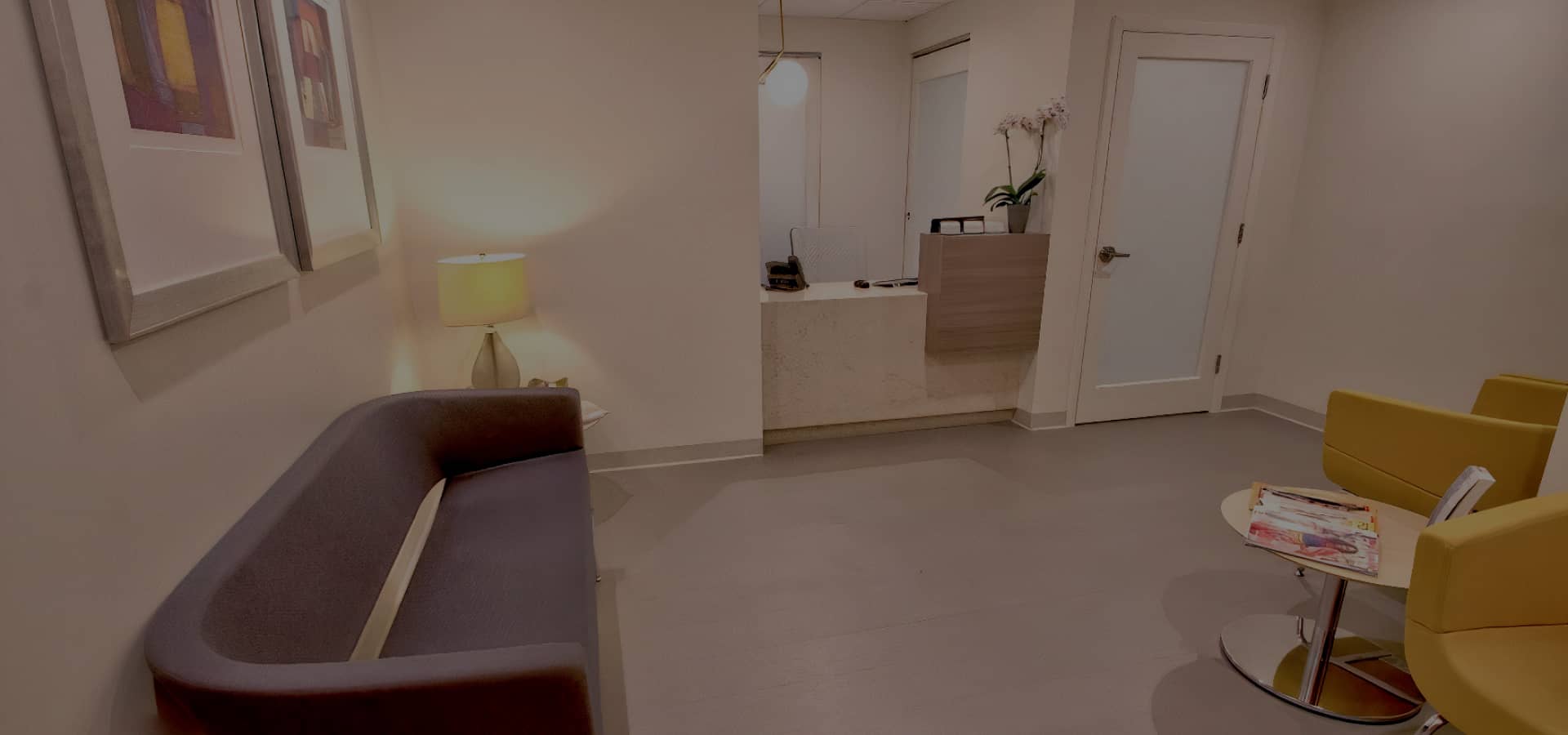It is possible to fix a crooked nose through a surgical procedure known as rhinoplasty. In some cases, excessive bruising and swelling may be related to blood flow issues or blood pressure changes during or after the rhinoplasty procedure.
Why is my nose crooked?
A crooked nose can be caused by a variety of factors, including genetics, trauma, previous surgery, or even a deviated septum. In some cases, the cause of the crookedness is unknown. Fortunately, there are several ways to fix a crooked nose. Rhinoplasty is one of the most popular options for correcting a crooked nose.
Hereditary and Birth Defects
Birth irregularities and congenital masses, such as a cleft lip or palate, can cause the nasal passages to be obstructed and lead to a crooked nose. In addition, these issues can also cause breathing problems due to the abnormal shape of the nose. Furthermore, certain genetic conditions can cause a person’s nose to crooked from birth.
Deviated Septum
The nasal septum is a partition made of cartilage that divides the nose into two sections, left and right. A deviated septum occurs when the nasal septum is crooked or shifted to one side, which can cause breathing difficulty, sinus congestion, and sleep apnea. Symptoms may include functional issues such as a blocked or stuffy nose, facial pain or pressure, difficulty sleeping on one side, frequent nosebleeds, snoring, or loud breathing during sleep.
Physical Trauma
Physical trauma, such as a broken nose or nasal fractures, can cause a misaligned nose and affect facial symmetry. A broken nose is usually accompanied by swelling, bruising, and pain, while nasal fractures may also involve bleeding from the nostrils. Other symptoms of a broken nose include difficulty breathing through one side of the nose, and a whistling sound when breathing in deeply through the affected side.
Complications From a Prior Nose Surgery
A primary nose job Miami can be used to correct nasal structure and asymmetry. However, in some cases, the procedure may not provide the desired results or cause additional breathing issues. In such cases, a revision rhinoplasty may be necessary to address any complications from the initial surgery and improve the appearance and function of the nose.
Correcting a deviated nose is a challenging task in the field of rhinoplasty surgery. Addressing the issue of straightening an extremely crooked nose takes an understanding of the different components of the nose.
The nose can be composed of three essential areas:
- Upper portion: Composed of the nasal bones, contributing to the overall structure.
- Mid-portion: Known as the middle vault, playing a key role in nasal alignment.
- Tip: The lower end of the nose, often impacting the aesthetic appearance.
Each of these components may contribute to the crooked appearance of the nose, either individually or collectively.
Crooked Nose Photos: Before and After Rhinoplasty
Good photographs from different angles are essential in analyzing the nose. The photos reveal to a surgeon a lot of the underlying and complex framework of the nose contributing to its crooked appearance.
The photos may also reveal facial asymmetries itself which may also contribute to the nasal asymmetry. The first assessments of the nose itself are the nasal bones: These could deviate in any number of different positions.
Slide with your finger for more images
Crooked Nose Rhinoplasty Steps
Step 1: Grafting cartilage
A simple septoplasty (functional rhinoplasty) will often not correct the deviation. Most of the time cartilage grafts from the septum will be necessary to give the nose a straighter appearance. These grafts need to be positioned in such a manner that they not only correct the deviated portion of the nose but also provide long-term structure and stability to the nose.
Step 2: Straightening of the Bones
The straightening of the bones is performed through osteotomies or the controlled fracturing (breaking) of the bones to realign them. The most intricate aspect of the straightening of the nose is the middle third of the nose or the middle vault.
Multiple cartilages contribute to the shape of the middle third of the nose: the septum as well as cartilages on either side of the septum known as the upper lateral cartilages. These can all be deviated in any number of different positions. Herein is where most noses remain deviated even after attempts are made to straighten the nose.
Correcting a crooked dorsum requires meticulous attention to detail and, at times, aggressive surgical techniques to try and provide for a long-term correction.
Correcting the septum and placing it in the midline is essential as this provides the main framework for the nose. However, if your crooked nose is more severe, you may need to consider surgical options such as rhinoplasty in Miami.
Step 3: Correction of the Nasal Tip
Again the placement of the septum in the midline is key to the correction of the nasal tip. Once the septum is set in the midline then the nasal cartilages which support and make up the tip can be positioned around it.
In the severely deviated nose, these cartilages which make up the tip (lower lateral cartilages) are often asymmetric as well. If so, maneuvers need to be performed to try and create symmetry between the two sides.
Dr. Bared explains how he fixed the crooked nose of a real patient
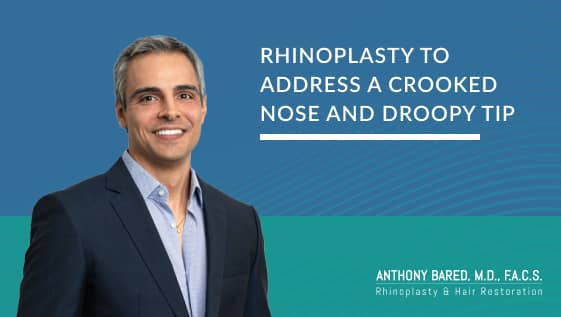
Healing after Nose Job for Crooked Nose
A rhinoplasty surgeon will use precise techniques to reshape the bones and cartilage of the nose. The recovery time for this type of surgery will vary depending on the extent of work done but the bone healing process can take up to six months. During this time, strenuous activities may be restricted until proper healing has occurred, and follow-up visits with your surgeon may be necessary.
Can a Rhinoplasty Procedure Fix Both Breathing Issues and a Crooked Nose?
Yes, it can. Rhinoplasty, a surgical procedure to reshape the nose, can address functional concerns such as breathing issues and aesthetic problems like a crooked nose. By correcting the underlying structural problems that impede airflow, rhinoplasty offers effective breathing issues treatment options while simultaneously improving the appearance of the nose.
In short, rhinoplasty:
- Corrects structural deformities for a straighter nose.
- Enhances facial symmetry and aesthetic balance.
- Improves nasal function for better breathing.
- Boosts self-confidence with a more natural appearance.
Can You Fix a Crooked Nose Naturally?
Other treatments such as dermal filler injections may also be used to correct minor deformities in the nose. Additionally, non-surgical treatments such as splints and taping may help improve the appearance of a crooked nose over time. Ultimately, consulting with an experienced plastic surgeon is the best way to determine which treatment option is right for you.
If you have a crooked nose, there are several options available to help correct the issue. Depending on the severity of your crooked nose, you may be able to use non-surgical methods such as splints or taping. However, if your crooked nose is more severe, you may need to consider surgical options such as rhinoplasty Miami.
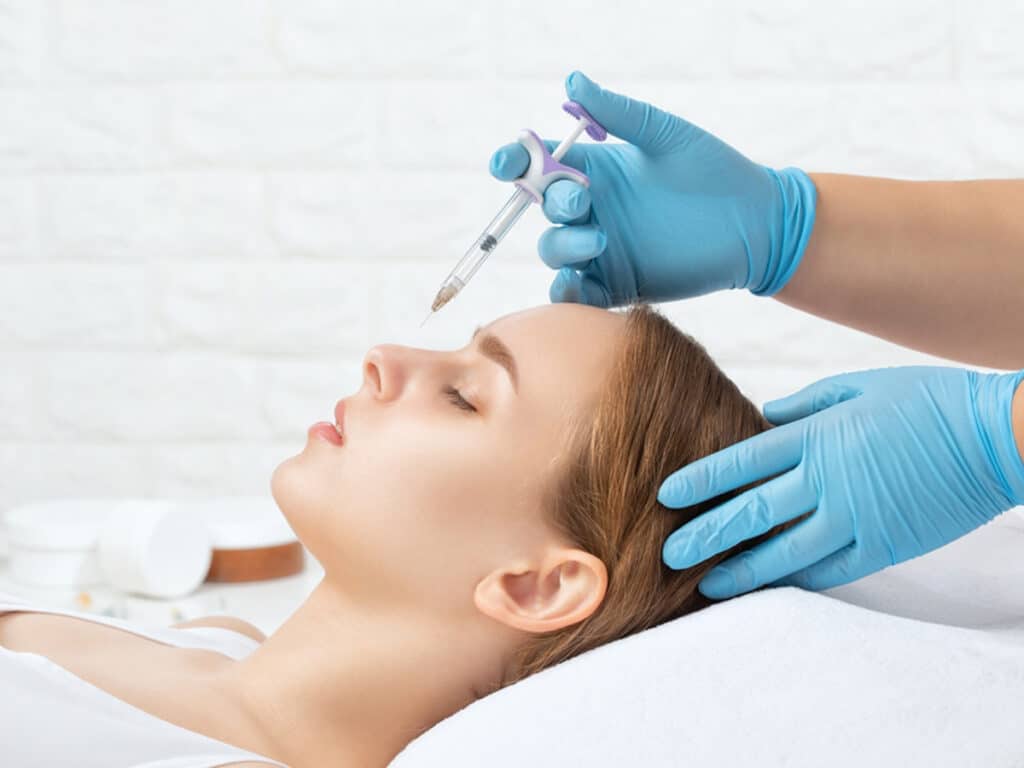
Non-Surgical Options
Splints
Splints can be used to help straighten a crooked nose by gently pushing the cartilage back into place. This method is often used for minor cases of a crooked nose and can be done at home with the help of an ENT doctor or plastic surgeon.
Taping
Taping can also be used to help straighten a crooked nose by using adhesive tape to hold the cartilage in place while it heals in its new position. This technique is commonly utilized for minor cases of a deviated nasal septum and can be performed with the assistance of an ENT specialist or plastic surgeon.
Consult a Crooked Nose Specialist in Miami
Attempting to adequately correct a crooked nose is a multifaceted approach that involves not only meticulous attention to detail and understanding of the different anatomical components of the nose but the execution of techniques that will provide adequate structural support.
If you’re looking for a double-board certified facial plastic surgeon who specializes in rhinoplasty, look no further than Dr. Bared. With 70% of his practice dedicated to rhinoplasty procedures, you can rest assured that he has the expertise and experience needed to deliver effective results. Schedule a consultation today!
